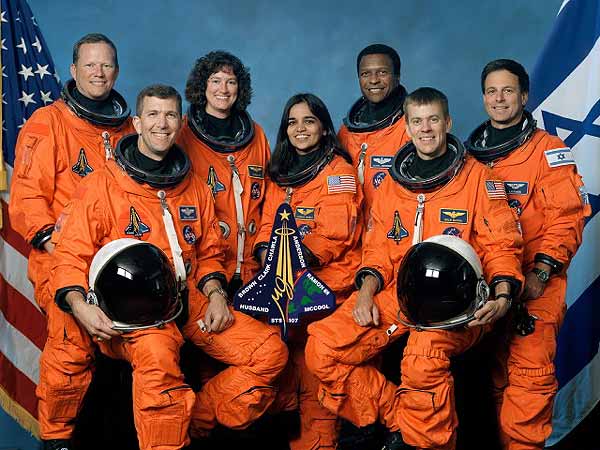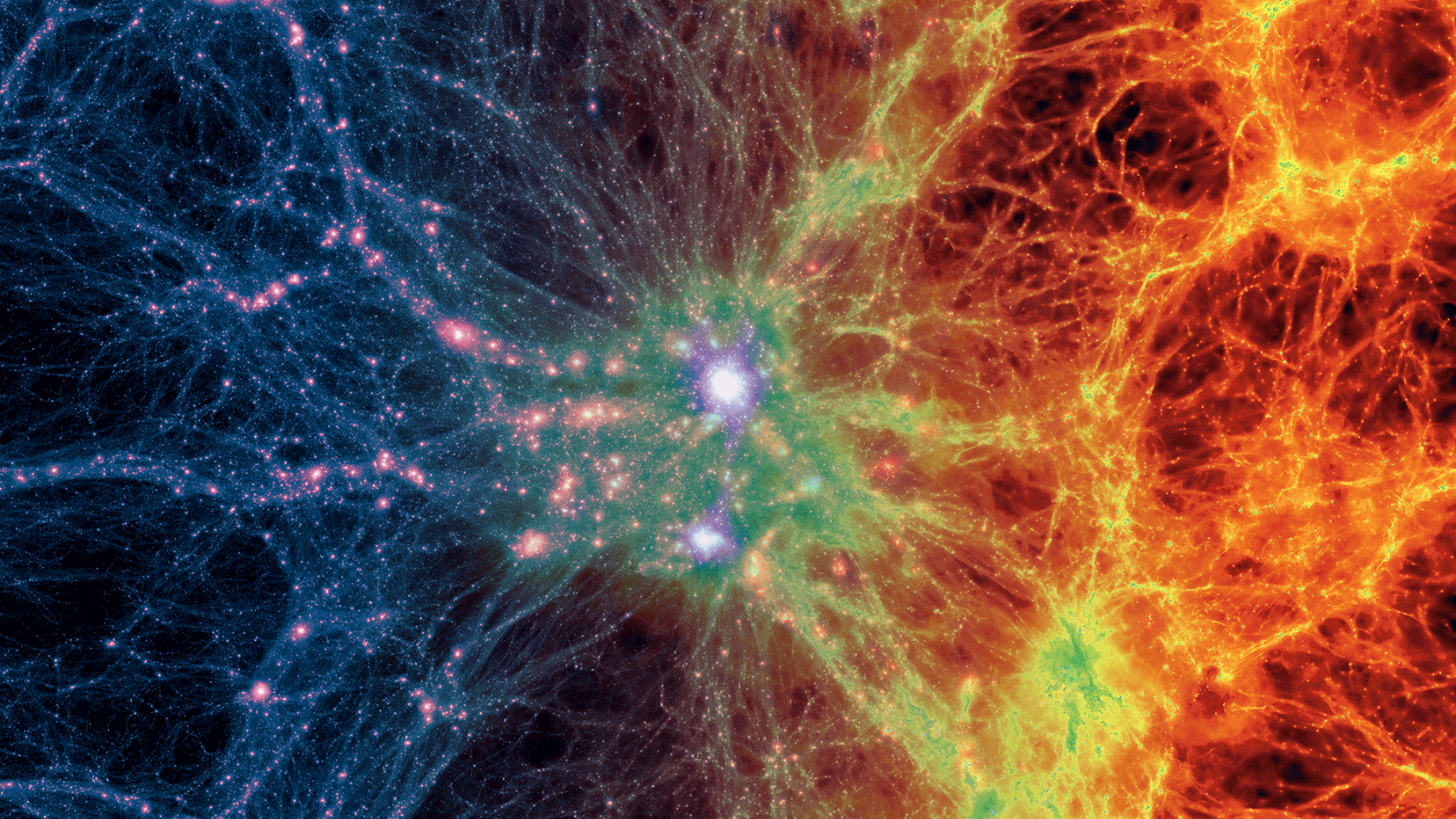
(Editor's note: This story was originally published on January 13, 2003.)
CAPE CANAVERAL, Fla. — More than two years after they were assigned, the crew of shuttle Columbia is finally lined up on the field and ready for the opening kickoff Thursday of a 16-day science research mission.
Originally targeted for launch in July 2001, the seven-member team has had to endure lengthy schedule delays caused by fleet-grounding technical problems and higher priority shuttle missions.
But through the long wait they've stuck to their training, found time to relax with their families and maintained their sharp edge like a team contending for the Superbowl.
"I think we've maintained a really good balance and we're definitely ready to go," said STS-107 commander Rick Husband, a veteran astronaut who flew as pilot in 1999.
Liftoff of Columbia is expected between 10 a.m. and 2 p.m. EST (1500 and 1900 GMT) Thursday from pad 39A at the Kennedy Space Center. Due to security concerns, the exact launch time will be announced Wednesday.
Heightened security also is the reason why NASA will not release information about when the seven astronauts will arrive in Florida from Houston, or exactly when the countdown begins — two events that should already have taken place by Monday morning.
Breaking space news, the latest updates on rocket launches, skywatching events and more!
Marathon science
Columbia's voyage — the 28th flight for the orbiter and the 113th for the shuttle program — is the first flight not going to the International Space Station program since the same shuttle hosted a Hubble Space Telescope servicing mission in March 2002.
So once Columbia arrives in Earth orbit some nine minutes after blastoff, the seven-member crew will get right to work turning their rocketship into a platform where science experiments will be conducted around-the-clock in two shifts.
"We'll have a red team and a blue team, and that way somebody is awake at all times to conduct science operations," said Kelly Beck, Columbia's lead flight director.
Husband will be joined on the red team by mission specialists Kalpana Chawla and Laurel Clark, as well as Israel's first astronaut Ilan Ramon.
On the blue team will be Columbia pilot William McCool and mission specialists Michael Anderson and David Brown.
"This flight is going to provide multiple NASA centers, international community as well as universities and schools throughout the world a very unique opportunity to perform a lot of science and a lot of research and technology demonstration," Beck said.
Much of the work will be done inside a pressurized SpaceHab research module that is tucked inside Columbia's cargo bay and connected to the crew cabin by a tunnel. Also in the bay is a pallet of experiments called Freestar.
Altogether there are 86 payloads that will support 79 science experiments and investigations in the fields of biology, physical science, advanced technology and Earth and space sciences during the marathon research mission. That number includes 15 student experiments as well.
"The payloads on the mission are not studying space per se, but they are using access to spaceflight as a tool to understand physical and biological phenomena," said John Charles, NASA's mission scientist for biological and physical research.
Although this mission isn't going to the orbiting outpost, the ISS program is indirectly responsible for the creation of this shuttle science mission.
Congress directed NASA to keep the science community busy while the station was under construction and its full research capabilities still were limited, Charles said.
"This is simulated space station science — although the science itself stands on its own right — with the goal of keeping the scientists who are involved in this type of activity engaged and productive and moving forward until the space station can assume the leading role of research," Charles said.
Long road to space
The original plan called for this STS-107 mission to be flown in the summer of 2001. To support that date the science crew was named on Sept. 28, 2000 and the command crew was announced on Dec. 1, 2000.
But almost as soon as the ink was dry on the press release naming the crew, extra wiring inspections and delays in other work while Columbia was in California for a $70 million tune up threw a curve at NASA's plans.
When Columbia was returned to Florida in March 2001, still more work was needed to get the shuttle ready to fly and the space agency now had two missions in store for its oldest orbiter: the STS-107 research mission and the STS-109 Hubble Space Telescope servicing mission.
Problems with Hubble's control systems and the need to swap out a major camera prompted the space agency to select that mission first. It wasn't long before the Hubble flight found itself bumped into 2002, when it was successfully flown in March.
That put the STS-107 science mission on track for launch in the summer and after a few more hiccups here and there, the schedule solidified around a target launch date of July 19.
But in late June 2002, with Columbia ready for its mission and literally ready to leave its hangar for the Vehicle Assembly Building, shuttle program managers put a halt to all pre-launch preparations and essentially grounded the fleet.
Tiny cracks had been discovered in the propellant flow liners of sistership Discovery. The concern was serious enough that inspections had to be ordered on the other orbiters in the fleet — a task that required removal of the Rocketdyne main engines.
As the investigation into the problem continued and a repair method was selected and engaged, NASA officials prioritized its shuttle missions and decided to send two flights to the station first. As a result, Columbia's crew and mission support teams found themselves having to wait another six months to fly.
And by all accounts everyone was patient and took the delay in stride.
"We also tried to make sure we took advantage of the time not only from the standpoint of training, but also from the standpoint of being able to take some time off," Husband said.
"So last summer, when we found out there was going to be a delay, we saw a tremendous opportunity there to go ahead and take some summer vacation that we wouldn't have otherwise had, and then we were able to take some time at Thanksgiving and Christmas as well."
Nothing about the mission changed all that much, and the astronauts say that because of the extra training even in the rookies on the crew already feel a lot like the veterans. And all agreed that the delays will make the actual flight that much more enjoyable.
"Because of the delay the nervousness has lessened quite a bit, because now we are just waiting for launch day," Chawla said. "So in some sense there is more room to enjoy the excitement that this is coming."
Follow SPACE.com on Twitter @Spacedotcom. We're also on Facebook & Google+.
Join our Space Forums to keep talking space on the latest missions, night sky and more! And if you have a news tip, correction or comment, let us know at: community@space.com.
Jim Banke is a veteran communicator whose work spans more than 25 years as an aerospace journalist, writer, producer, consultant, analyst and project manager. His space writing career began in 1984 as a student journalist, writing for the student newspaper at Embry Riddle Aeronautical University, The Avion. His written work can be found at Florida Today and Space.com. He has also hosted live launch commentary for a local Space Coast radio station, WMMB-AM, and discussed current events in space on his one-hour radio program "Space Talk with Jim Banke" from 2009-2013.
